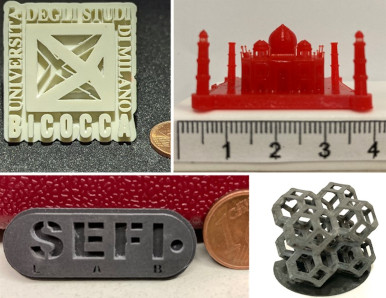
A major breakthrough in photopolymer additive manufacturing has been achieved through a collaborative effort led by the National Institute of Standards and Technology (NIST), which saw the contribution of over two dozen laboratories from six countries. The “Surface Engineering and Fluid interfaces Laboratory” (SEFI Lab) from the Department of Materials Science at University of Milano-Bicocca participated to the research study, as the only representative from Italy.
This collaboration, recently published in the journal "Additive Manufacturing" (Results of an interlaboratory study on the working curve in vat photopolymerization - DOI: 10.1016/j.addma.2024.104082), focused on setting the stage for a standardization of the working curve, an essential but critical measurement in photopolymer additive manufacturing. Specifically, the study targeted the open issues in reproducibility and reliability of working curves, which serve as the crucial initial step to define the material properties relevant to optimize the 3D printing process. This study represents a step in advancing photopolymer additive manufacturing technologies like stereolithography and digital light processing (DLP), guaranteeing consistent quality in the entire process.
“This work represents the cherry on the cake for the PhD research project of (now) Dr. Rajat Chaudhary” comments Prof. Carlo Antonini, who leads the SEFI Lab. “During his PhD, he has specifically focused on the defining a rational procedure to characterise photocurable resins for 3D printing via digital light processing. During a conference in US in October 2022, his work was recognized and noticed, so that our lab has been invited to join the interlaboratory research study led by NIST.” In the meantime, the second phase of the study has already started, with the goal of further improving the working curve definition and potentially defining a new international standard for photopolymer characterization.